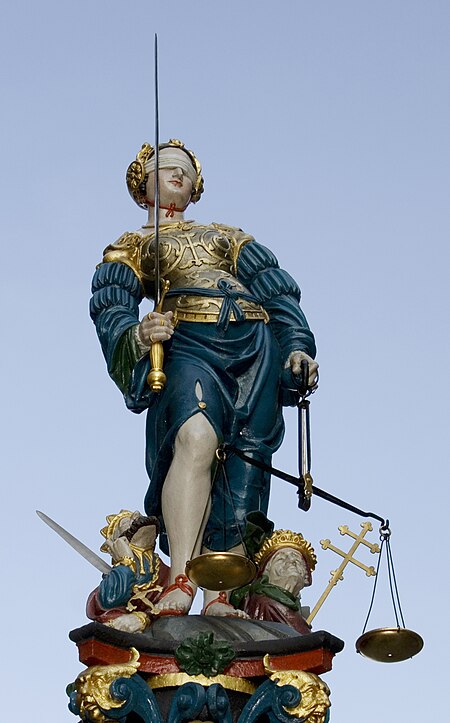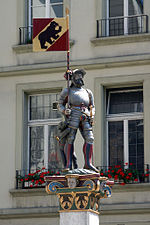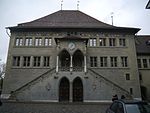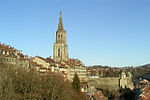Gerechtigkeitsbrunnen (Bern)
Cultural property of national significance in the canton of BernFountains in BernOld City (Bern)

The Gerechtigkeitsbrunnen (Fountain of Justice) is a 16th-century fountain in the Gerechtigkeitsgasse in the Old City of Bern, Switzerland. It is the only Bernese fountain to retain all original design elements, and is listed as a cultural heritage of national significance.Thanks to its namesake figure, Hans Gieng's famous statue of Lady Justice, the Gerechtigkeitsbrunnen surpasses all other Bernese fountains in artistic merit. The iconic figure was copied throughout Switzerland up until the middle of the 17th century. The statue is a copy of the original, which was largely destroyed by vandals in 1986.
Excerpt from the Wikipedia article Gerechtigkeitsbrunnen (Bern) (License: CC BY-SA 3.0, Authors, Images).Gerechtigkeitsbrunnen (Bern)
Gerechtigkeitsgasse, Bern
Geographical coordinates (GPS) Address External links Nearby Places Show on map
Geographical coordinates (GPS)
| Latitude | Longitude |
|---|---|
| N 46.948296 ° | E 7.454063 ° |
Address
Gerechtigkeitsbrunnen
Gerechtigkeitsgasse
3011 Bern (Stadtteil I)
Bern, Switzerland
Open on Google Maps










